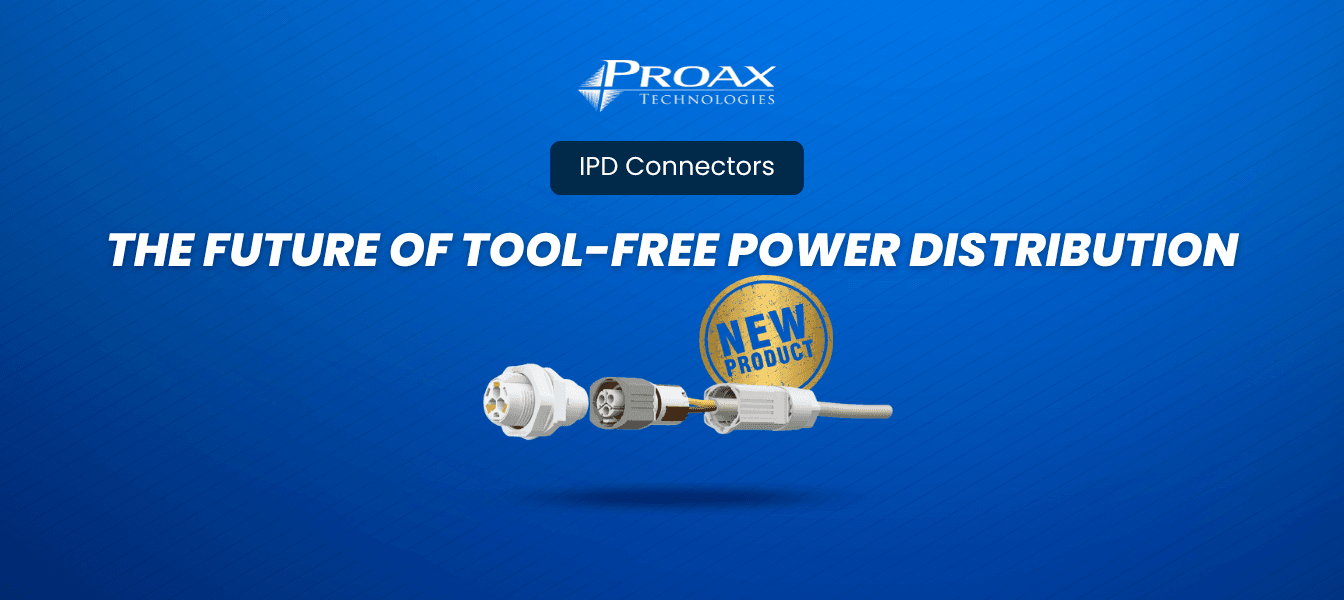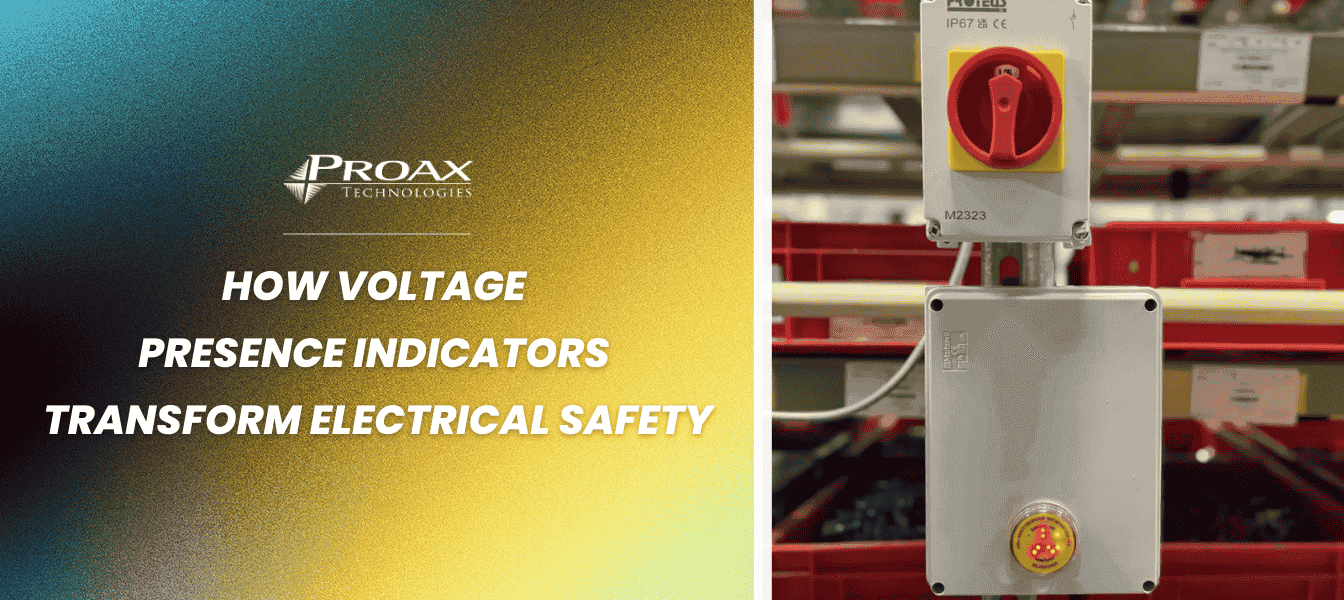Ever watched a production line and wondered how machines know exactly when a product passes by? That's where proximity sensors come in! These small but mighty devices are the unsung heroes of industrial automation, detecting objects without physical contact and enabling seamless operations across countless industries.
As a trusted distributor of Omron—a global leader in sensor technology—we at Proax understand how critical choosing the right proximity sensor is for your operation's efficiency and reliability. With decades of engineering excellence, Omron's sensors offer precision, durability, and innovative features that keep your systems running smoothly.
Let's dive into the world of proximity sensors and help you find the perfect match for your application needs.
Types of Proximity Sensors
Inductive Proximity Sensors: The Metal Detectors
How They Work:
Inductive sensors generate an electromagnetic field that changes when metal objects enter their detection range. Think of them as specialized metal detectors that can sense even the smallest metallic components with incredible precision.
Real-World Applications:
- Detecting the position of metal parts on assembly lines
- Counting metal components moving along conveyor belts
- Monitoring valve positions in fluid handling systems
- Verifying proper tool placement in machining operations
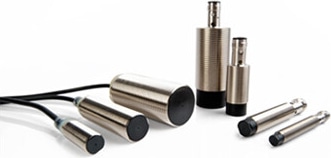
Omron Solutions:
- E2B DC 3-wire Economy Proximity Sensors: Standard barrel DC 3-wire inductive proximity sensors ideal for everyday industrial applications.
Advantages:
- Exceptionally reliable in harsh industrial environments
- Long service life with no moving parts to wear out
- Resistant to dust, vibration, and moisture
- Cost-effective solution for metal detection
Limitations:
- Can only detect metallic objects
- Relatively short sensing range (typically up to 80mm)
- Sensitivity varies depending on the metal type
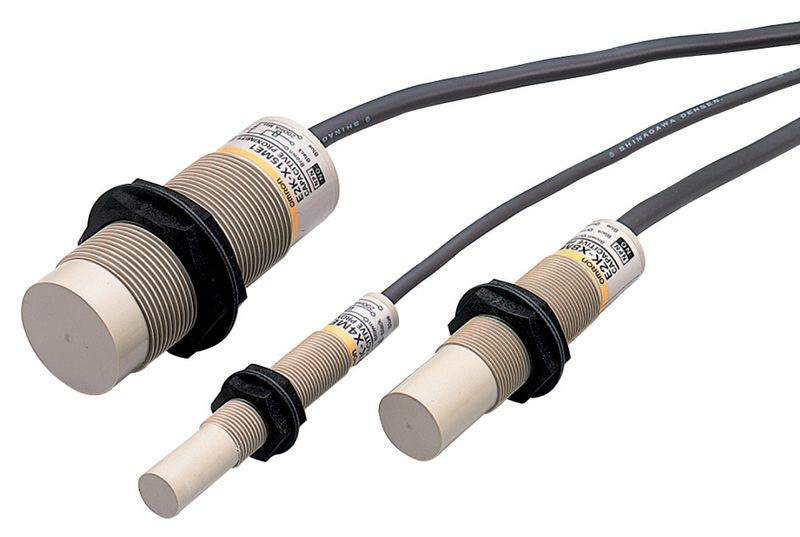
Capacitive Proximity Sensors: The All-Material Detectors
How They Work:
Capacitive sensors detect changes in the electrical field around them when any object—metallic or non-metallic—comes close. They're like the versatile all-rounders in the sensor world, able to detect materials that inductive sensors can't "see."
Real-World Applications:
- Liquid level detection in food and beverage production
- Sensing plastic parts in packaging operations
- Detecting glass containers on production lines
- Monitoring powder levels in pharmaceutical manufacturing
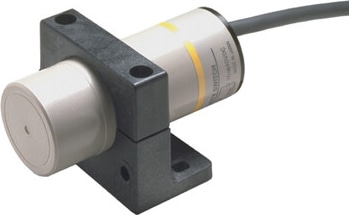
Omron Solutions:
- E2K-C Long Distance Adjustable Capacitive Sensors: Long distance capacitive proximity sensor with adjustable sensitivity for precise material detection.
Advantages:
- Versatile detection of both metallic and non-metallic materials
- Ability to "see through" certain non-metallic containers
- Adjustable sensitivity for specific applications
- Perfect for detecting liquids, powders, and granular materials
Limitations:
- More susceptible to environmental interference
- Can be affected by humidity and temperature fluctuations
- Typically have shorter sensing ranges than photoelectric options
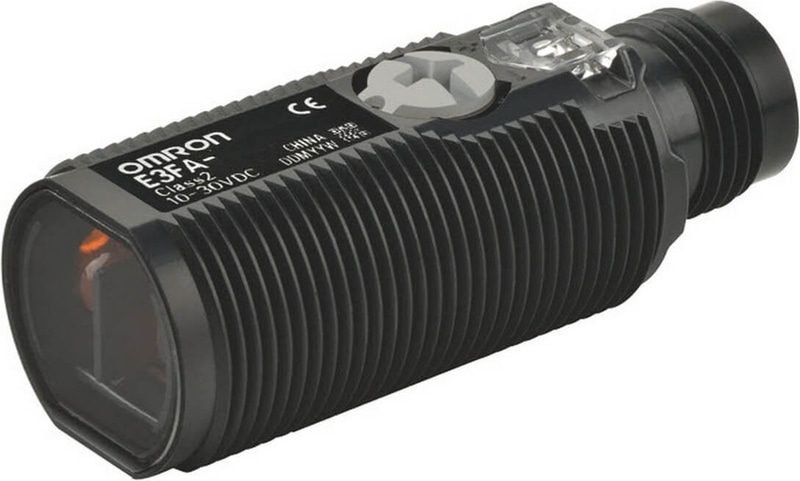
Photoelectric Proximity Sensors: The Long-Range Specialists
How They Work:
Photoelectric sensors use light beams (usually infrared or visible red) to detect objects. When an object interrupts or reflects the light beam, the sensor triggers a response. Think of them as sophisticated "light barriers" that can work across impressive distances.
Real-World Applications:
- Detecting transparent objects like glass bottles or film
- Precise positioning in automated warehousing
- Counting products on high-speed packaging lines
- Quality control inspections for small components
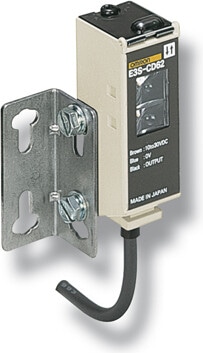
Omron Solutions:
- E3FA Plastic Body M18 Barrel Photoelectric Sensors: High performance photoelectric sensor in compact M18 housing.
- E3Z Compact Plastic Body Photoelectric Sensors: General purpose sensor in compact plastic housing for versatile applications.
- E3RA Right Angle Plastic Body M18 Barrel Photoelectric Sensors: Plastic body M18 photoelectric sensor with a right angle design for tight spaces.
- E3S-C Oil Resistant Mini Metal Body Photoelectric Sensors: Long-distance compact sensor in oil-resistant metal housing for harsh environments.
- E3JM Multi-voltage Photoelectric Sensors: Multi-voltage photoelectric sensor in plastic housing with timer function.
Advantages:
- Impressive detection ranges (up to several meters)
- Ability to detect objects regardless of material composition
- High precision for small or transparent objects
- Various sensing modes for different applications
Limitations:
- Can be affected by ambient light and environmental contaminants
- May require more careful alignment and maintenance
- Typically more expensive than inductive sensors
Comparison at a Glance
| Feature | Inductive | Capacitive | Photoelectric |
|---|---|---|---|
| Detectable Materials | Metals only | Metals, plastics, liquids, powders, etc. | Any material (including transparent) |
| Sensing Range | Short (1-80mm) | Medium (3-120mm) | Long (up to several meters) |
| Environmental Resistance | Excellent | Good | Fair to Good |
| Precision | High | Medium to High | Very High |
| Best For | Metal detection in harsh environments | Non-metallic materials and level sensing | Long-range detection and small/transparent objects |
| Cost | $ | $$ | $$$ |
Choosing the Right Sensor: Quick Selection Tips
Based on Material:
- Metal objects only? → Inductive sensors
- Plastics, liquids, or mixed materials? → Capacitive sensors
- Transparent materials or need to detect any material type? → Photoelectric sensors
Based on Range Requirements:
- Close proximity (under 80mm)? → Inductive or capacitive sensors
- Medium distance? → Consider diffuse reflection photoelectric sensors
- Long distance (meters)? → Through-beam or retroreflective photoelectric sensors
Based on Environment:
- Harsh conditions with dust, oil, or vibration? → Inductive sensors offer superior durability
- Moderate conditions? → Capacitive sensors work well
- Clean environments where precision is critical? → Photoelectric sensors excel
Based on Application:
- Simple presence detection? → Inductive sensors for reliability
- Material differentiation or level sensing? → Capacitive sensors for versatility
- Precise positioning or small object detection? → Photoelectric sensors for accuracy

Why Choose Omron Sensors From Proax?
Imagine you're automating a conveyor line that handles both metal and plastic components. You need sensors that won't fail when exposed to dust, vibration, and occasional cleaning. This is exactly where Omron's sensor technology shines:
- Industry-Leading Reliability: Omron's sensors maintain consistent performance even in challenging industrial environments
- Advanced Technology: With features like extended sensing ranges and improved immunity to environmental factors
- Versatile Solutions: One-stop shopping for all your proximity sensing needs
- Expert Support: Our team at Proax helps you select and implement the perfect sensor solution
Omron's comprehensive sensor lineup includes specialized options for unusual applications, such as:
- Sensors with chemical-resistant housings for food and pharmaceutical applications
- High-temperature models for foundry and automotive manufacturing
- IO-Link enabled smart sensors for Industry 4.0 integration
Conclusion
Selecting the right proximity sensor doesn't have to be complicated. By understanding the basic principles and strengths of each sensor type—inductive for metals, capacitive for versatile material detection, and photoelectric for precision and range—you can make informed decisions that enhance your automation systems.
Omron's extensive range of proximity sensors, available through Proax, offers reliable solutions for virtually any industrial application. Whether you're modernizing an existing production line or designing a new automated system, the right sensor choice makes all the difference in operational efficiency and long-term reliability. Contact our Proax sensor specialists today for personalized recommendations based on your specific application requirements.
Let us be your trusted partner in automation excellence!












































